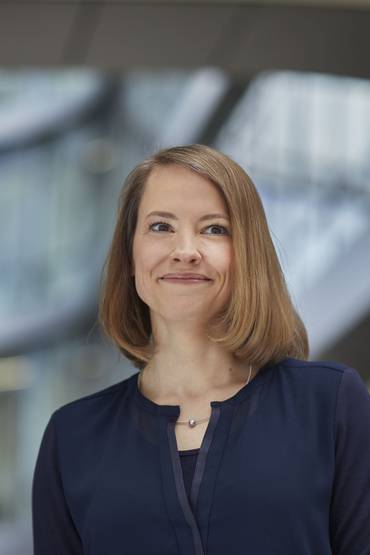Siemens Monocle
Transforming the everyday
The Metaverse has its sceptics but, like any new tool, it is how we use it that counts. From testing space exploration to growing plants underwater, it has the potential to be a virtual world to solve real-world problems.

Start-up Nemo’s Garden is focused on the cultivation of underwater crops
Despite all of the hype around the Metaverse, there has been a backlash from those who forecast a nightmarish future in which users’ experience of the world is divorced from reality. Such critics often echo the bleak depictions appearing in dystopian literature and film, whereby people are portrayed as being so enthralled with an omnipotent virtual force that they forego their agency in the real world. But is the Metaverse an inherently bad thing? Like any new tool, it is what we make of it. The central idea behind the Metaverse is as simple as it is fascinating: a virtual world in which, so the theory goes, an unlimited number of people can interact with each other in real time. It’s a place where people can shop, talk, play and work –and go beyond the limitations of physical reality.
What if such a tool were less about moving beyond physical reality and more about improving it? What if instead of a Metaverse focused on entertainment and socialising, there was one trained entirely on solving real-world problems? “Unlike the consumer Metaverse, the industrial Metaverse will always work in relation to a real system,” says Annika Hauptvogel, head of technology and innovation management at Siemens. “And the most important part about this connection between the real and the digital world is that we have a realistic application.”

Nemo’s Garden develops and optimises its bioshperes using digital twins
No one can yet say what the Metaverse will look like in five, 10 or 20 years’ time. But many agree that its greatest value will be in improving life in the real world. Drawing on his extensive past in the fields of gaming and semiconductors, Jensen Huang, CEO and founder of software company Nvidia, predicts that the next big step in the Metaverse’s development will be to apply the laws of real-world physics. “Laws of particle physics, of gravity, of electromagnetism, of electromagnetic waves, including light and radio waves, of pressure and sound,” he says.
Instead of shooting equipment through space and hoping for the best, Nasa was able to ensure success
The implications of this would be unprecedented. Buildings, cities, vehicles and transport systems could be developed in the virtual world. Expensive and time-consuming industrial planning mistakes would be a thing of the past. Manufacturing processes could be tested and improved. And with a constant influx of data, the Metaverse could identify the causes of acute problems as they arise, identify solutions and optimise the factory. Huang’s vision isn’t a remote fantasy. A few weeks ago he travelled to Munich to announce a new partnership between Nvidia and Siemens to build an Industrial Metaverse that’s set to revolutionise how we shape our physical world.
With expertise in manufacturing, infrastructure and transportation systems, Siemens has long been synonymous with engineering excellence. And in recent years, it has become a master of physics-based digital twins. Ten years ago, Siemens helped Nasa create a digital twin of their Mars rover, Curiosity. Together, they simulated everything from the planet’s hostile environment to the most critical part of any space mission: the landing. Instead of shooting an expensive piece of equipment through space and hoping for the best, Nasa was able to ensure success.

Annika Hauptvogel of Siemens

Metaverse expert Matthew Ball
A more recent example of the wonders of digital twins is Nemo’s Garden, a start-up focused on the underwater cultivation of crops. Their key innovation, a sub-aqua biosphere, is a unique type of underwater greenhouse that harnesses the environmental conditions of the ocean to create an ideal environment for crop cultivation. Benefits include temperature stability, the generation of water from evaporation, CO2 absorption, the abundance of oxygen and the inherent protection from pests. All these factors led the team to a discovery: that plants grown underwater are nutritionally richer than those grown on land.
But like Mars, the ocean can be hostile. To ensure that the conditions are just right, Nemo’s Garden must simulate their biospheres, current flows, water pressure, solar radiation, the growth of the plants and their interactions with their alien environment. Nemo’s Garden and Siemens have partnered to understand the challenges better, find new answers faster and create a more commercially viable solution. It is with the help of the Siemens Xcelerator portfolio of software and services that both companies are working towards the next stage of development, coming one step closer to achieving the dream of scalable, underwater farming.
Companies can already do amazing things with digital twins. But that’s only a taste of what an Industrial Metaverse has in store. We can expect more efficient transportation systems, more individualised healthcare, more sustainable cities, optimised energy systems and factories that produce more while using fewer resources.
Matthew Ball, an entrepreneur, author and expert on the Metaverse, is positive about its implications. “I expect the Metaverse to have a substantial effect on human life,” says Ball. “In particular, with regard to who needs to be where to fulfil which jobs. Today, many activities are done offshore but they are typically at the lowest end of the skill pyramid and don’t require physical presence.” Ball also expects the Metaverse to have a huge effect on large-scale, high density and critical infrastructure. He thinks, for example, of “buildings design that simulates the flow of energy and matter and which can then be managed, heated and cooled in response to their use, aiding our environmental efforts.”
What the future holds for the Metaverse is speculative. The Luddites of old were afraid that factories would eliminate their jobs. The sceptics of the Metaverse today paint a dismal picture of humanity and its place in the world. But the key question is: how will we use the technologies available? It’s up to us to use the tools today and tomorrow in a way that improves the world and transforms the everyday – for the better.

